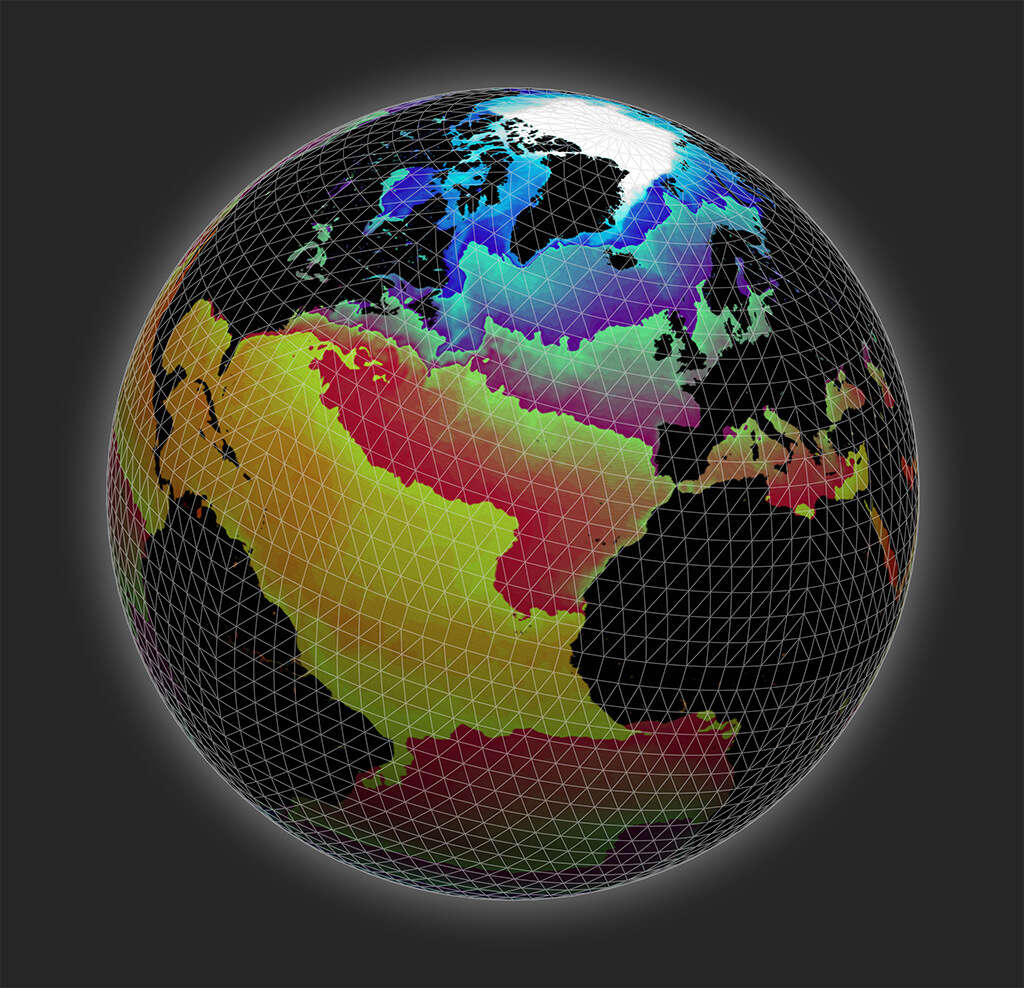
The message from COP26 is clear: the climate emergency has started, and will only get worse. Delegates have been confronted with images of ecological disasters and extreme weather events directly linked to the increasing amount of greenhouse gases being pumped into the atmosphere. Without drastically slashing those emissions, a global average temperature rise of 2C is unavoidable – and with it, ecological chaos and a perilous future for humanity.
Underpinning these predictions are complex climate models, the product of diligent scientific research conducted over decades. These simulations have formed “the foundation for the famous IPCC reports” alerting the world to global warming, explains Peter Bauer, deputy director of research at the European Centre for Medium-Range Weather Forecasts (ECMWF.)
Even so, these models typically run at resolutions of 50-100km, leaving them incapable of predicting wind patterns and therefore ineffective at predicting local or regional impacts of climate change. This is largely down to the fact that climate scientists do not have access to the raw computing power necessary to operate models at higher resolutions.
Enter Destination Earth. Run by the ECMWF, ESA and Eumetsat under the leadership of the European Commission, the project aims to build the first digital twins of our planet capable of running at resolutions as small as a single square kilometre. Informed by billions of real-time data points on everything from wind speeds and sea temperatures, to carbon emissions, wildfires, crop growth, ice sheet movements and even volcanic eruptions, these models will offer unprecedented insights on how the climate is changing at both the macro and micro levels. The first two, focusing on weather-induced and geophysical extremes and climate change adaptation respectively, are planned to be operational within the next two years.

An ECWMF visualisation of global sea temperatures. Destination Earth’s digital twins will be able to visualise the same data updated in real time and in much higher resolutions. (Photo courtesy of ECMWF)
As well as informing policymakers in Brussels on what measures are necessary to make the EU as a whole more sustainable, Destination Earth will finally give stakeholders at a regional and municipal level the chance to build linked models that provide insights relevant to them. The ultimate aim, explains Bauer, is to provide actionable data for everyone from planners trying to work out where to build new wind farms and flood defences, to corporations looking to future-proof their supply chains against drought. “Destination Earth is the first single effort that is trying to do all this at the same time,” he says.
This is nothing if not ambitious. “We know what we need in terms of simulation capabilities, but it takes a big jump in digital technology development to actually make that happen,” says Bauer. The sheer variety of possible users means that Destination Earth’s digital twins will have to operate an unprecedented level of fidelity to the processes they’re simulating – a truly daunting prospect according to the inventor of the digital twin, Professor Michael Grieves. “Who’s ever thinking they’re gonna do this?” Grieves said last year, questioning whether Destination Earth’s architects had truly considered how much computing power it would take to parse billions of constantly changing data points on sea temperatures, wind speeds and sunspots. “I’m hoping they’re about ten years old and they plan to live to 100.”
Since then, the ECWMF has demonstrated the feasibility of a 1.4km digital twin running for several days on a US supercomputer, although it took six months to parse the resulting outputs. Destination Earth will require a more long-term solution. “The idea is to set up [the project] in a federated concept,” says Bauer, with the digital twins tapping into the processing power of EuroHPC, an €8bn initiative to build a chain of supercomputers across the EU.
The project “aims to claim a certain fraction of those systems,” more than enough processing power to crunch through the billions of data points that shape the model. While Bauer concedes that Destination Earth will have to compete for access to the network from other interested parties (“That’s real life,” he says), the project will nonetheless benefit from the numerous upgrades to EuroHPC as it continues to scale in the coming years.

An ECMWF supercomputer. For Destination Earth to run at full capacity, it will need to tap into the much larger processing power of EuroHPC supercomputers located across the EU. (Photo courtesy of ECMWF)
In addition to having its first two digital twins up and running within the next two years, Destination Earth aims to have a full digital replica of the planet operational by 2030. And while the project’s ambitions are grand, the meteorologist is keen to emphasise that it will remain just one node in a whole network of initiatives designed to help the EU become more sustainable and inform the fight against climate change at all levels. “It needs to serve existing research and benefit from new research in the future,” says Bauer. For now, Destination Earth needs to “find its place in that ecosystem, to make sure that it’s better than the sum of its parts”.






